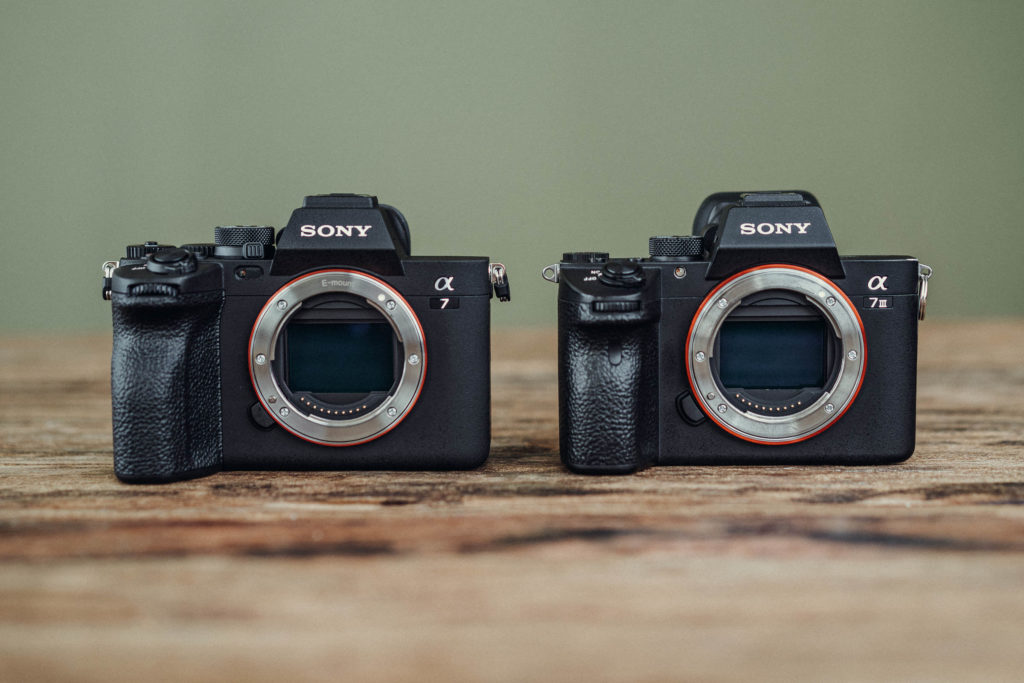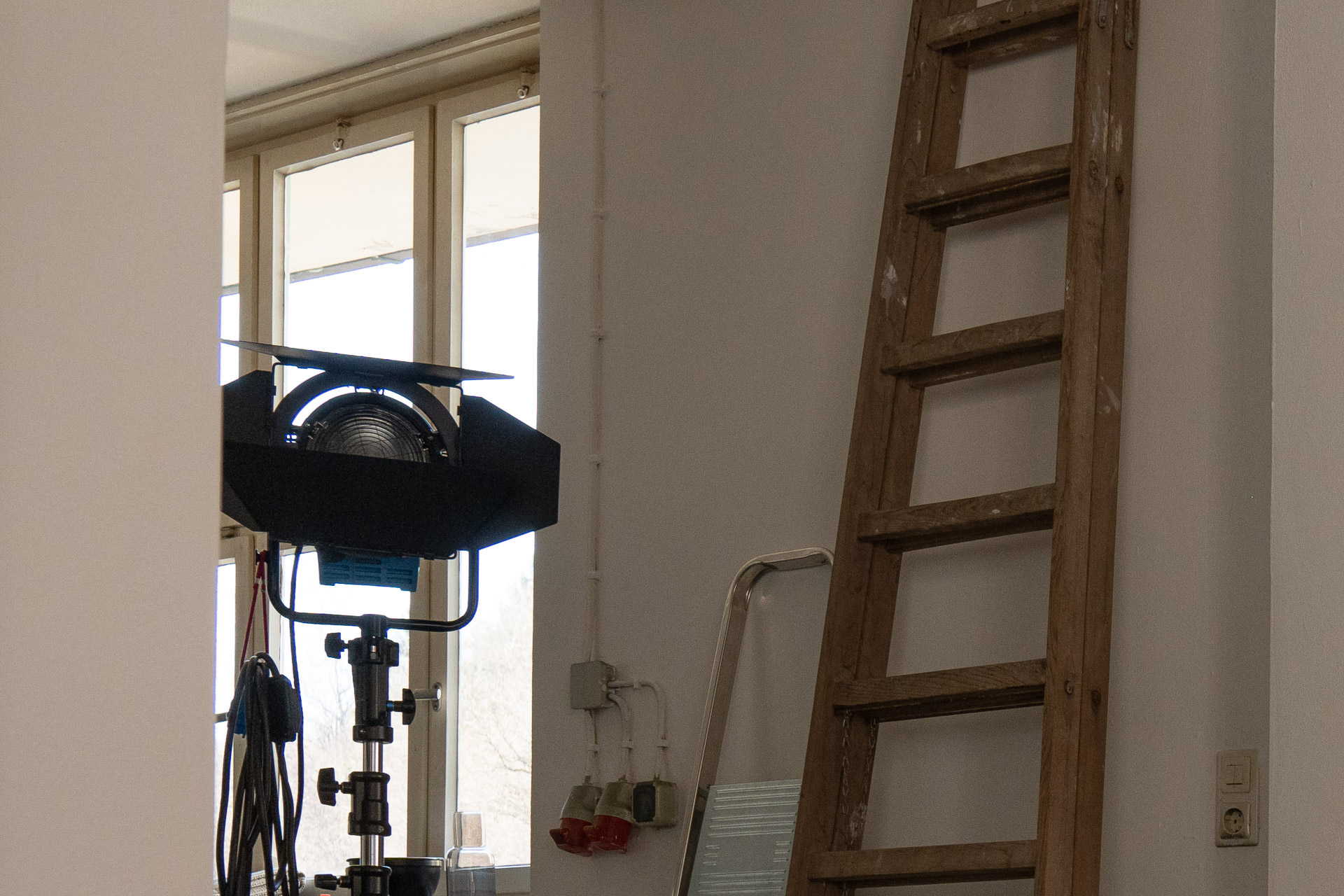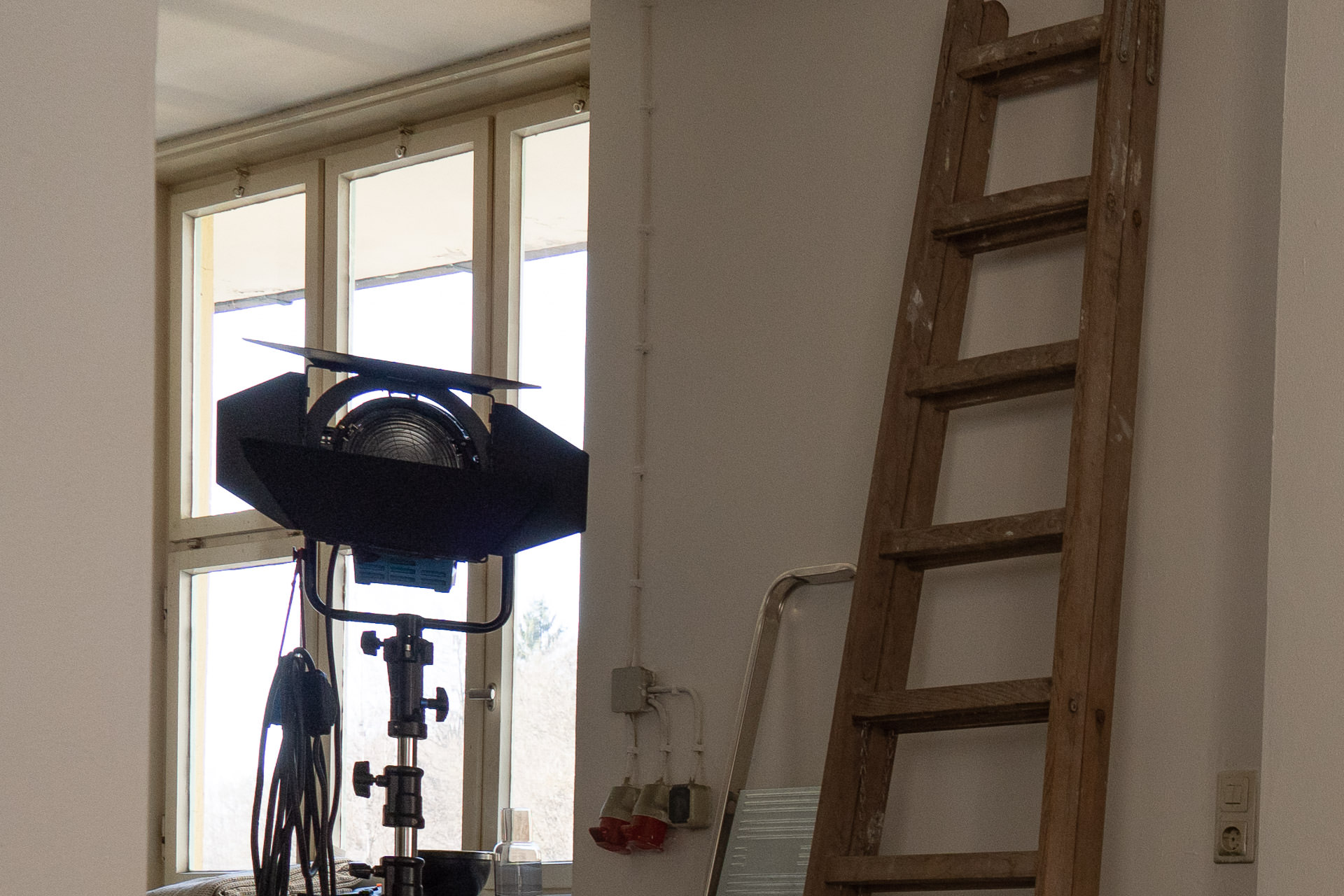Are you looking for a new camera? It should be full-frame and also convince with fast autofocus and excellent image quality? Exactly for this case I have written this Sony Alpha 7 IV review for you.
I am using the predecessor Sony A7 III since its release year 2018. So we have been a good team for a long time up to now. I therefore know the camera inside out and could therefore also identify some weaknesses. Sony has also become aware of these weaknesses in the meantime and has now improved things with the Sony A7 IV.

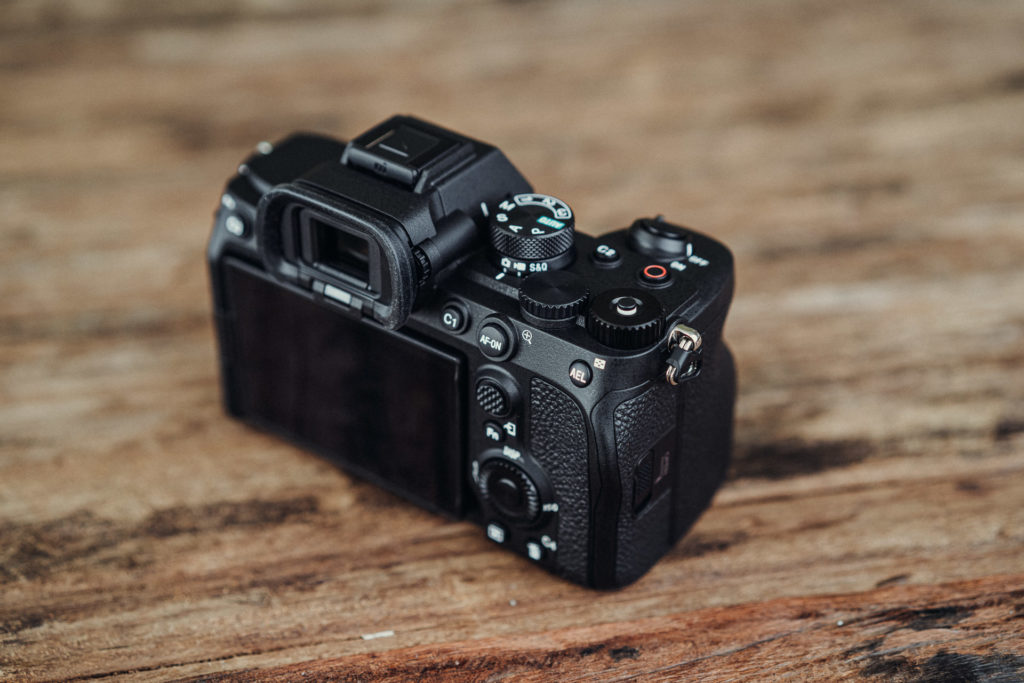
Although I do not have the camera yet in my possession – but I was able to have a closer look at it. In this article you will learn everything about all the innovations the camera brings. Of course, I will also answer the question on whether the Sony A7 III is still a good camera to go. Or in which cases you should better go for the new Sony A7 IV.
1. Why upgrade at all? The legacy of the Sony A7 III
Let me review the Sony A7 III in short.
In summary you could say: beauty does not always come only from the inside. Because the inner components such as the sensor and fast (eye) autofocus were already breathtaking in 2018. Even today it’s quite good. Rather there was something to complain about on what was built around the 24MP sensor: The camera body itself.
Like a moth to a flame, criticism was always drawn to the camera body of the Sony A7III. I don’t want to defend it’s housing in any way either, because it’s not great: other manufacturers’ cameras have always felt better. The Sony’s case always had a relatively smooth material, not a particularly large handle. The buttons were always relatively small. I think the former mindset in 2018 was like: build a camera as small and mobile as possible. This automatically limited ergonomics and good operability. I compensated for the small grip mostly by attaching my battery grip.

What I would still rate as poor are viewfinder and display. Both had the resolution of a potato. In addition, it was already a bitter surprise in 2018 that the touchscreen was actually only a data sheet feature. All you can do with it is move the focus point or double tap to zoom into the image. No more.
You wonder why I use the camera at all? Simply because the Sony A7 III already delivered fabulous image quality in 2018. The quality of the pictures this camera produces are still very good up to this day and would not be a reason for an upgrade. The focus system also runs smooth as a Swiss watch.
Conclusion: With the Sony Alpha 7 III I was able to take lots of great photos over the years. Thy always had an accurate focus and really good image quality. Even in darker shooting locations. Only the photographing itself was not always the best experience due to the housing and viewfinder and display resolution.
2. Technology overview: What the Sony A7 IV can do better
What is the Sony A7 IV basically capable of? For this, I’ll show the technical features and what has actually improved.
The new 33MP sensor
Let’s neglect that over time everything has to get better and faster of course. For me, this would not necessarily concern the sensor of the A7III. Because this one has always been very convincing and balanced for me. Good image quality, very good High ISO performance, massive RAW reserves. Even after 4 years, I think the sensor is very balanced with it’s 24MP.
Nevertheless, a new megapixel heart now beats in the new Sony A7 IV: The new rear-exposed 33.0 MP1 EXMOR R CMOS full-frame image sensor. That’s what it says directly in the spec sheet – translated, that means as much as: Also an extremely good sensor, but instead of 24 megapixels, it now shoots with 33 megapixels. This brings the advantage of more detailed photos and more flexibility for cropping in post-processing. But when there are more pixels, there will also be larger amounts of data. This is not only noticeable in the bigger memory cards you’ll need, but also in the required processor power and the complete workflow afterwards up to post-processing.
For this, the camera has received a new processor that writes these amounts of data so fast that you hardly notice a difference. The buffer has increased so much that despite the larger file size, more shots are possible within one image-burst than before.
The camera still shoots at 10 frames per second – but only with compressed RAW data. As soon as you shoot uncompressed or lossless compressed RAW data, the rate goes down to 6 frames per second. Nevertheless, I think the new option for a lossless RAW compression is very exciting, this did not exist before. Besides JPG, the more modern image format HEIF is also available. For example Apple is using this image format already for a long time in its iPhones.
The dynamic range has hardly improved. Here the A7III has already done a very good job. What has been further improved is the color science, especially skin tones haven been improved a bit. These tend to look a bit more natural.
Here is a small comparison of the ISO performance of the two cameras – the photos have already been cropped to better see the noise:
ISO 1000 – Before: Sony A7 IV / After: Sony A7 III
ISO 3200 – Before: Sony A7 IV / After: Sony A7 III
My biggest concern was that the larger 33MP sensor may perform worse at higher ISO values. However, it looks to me like both sensors perform equally well. On the contrary: In the full-resolution images, I could see that the noise of the Sony A7 IV even looks a bit finer and thus less disturbing with the same image detail. This is probably due to the higher resolution. Here you can download the ISO test croppings in original resolution.
And another nice feature: The sensor can now also be protected from dust by closing the shutter curtain after switching off to change the lens. However, you should keep in mind that the curtain is an extremely sensitive component that you should not be touched by anything.
The extremely good autofocus has been further upgraded
Shortly after the release of the Sony A7 III in 2018, »Real Time Tracking« autofocus was introduced. What the predecessor missed has since been also installed in the Sony A7S III and now in the new Sony A7 IV. The difference? Focusing is even more reliable and direct, especially with subjects in motion. Also the extension to a bird eye autofocus is new. More information about autofocus, tracking and co. you can find in my ultimate autofocus guide.
In addition, the new camera again has a few more autofocus fields, which simply ensures that e.g. the eye tracking is working a bit more smoothly. The focus point seems to be still a little more directly connected to the eye. And now also has a bit more tolerance for when the person has already turned away from the camera a bit.
In addition, the autofocus is even better with dark shooting scenes. Light sensitivity increased from -3 EV to now -4 EV.
Improved video functions
The camera is not only for photography use. Professional videos have also always been possible with the A7 series. The A7 IV offers six significant improvements here:
- 4K recordings are now possible with up to 60 frames per second
- Videos are recorded internally with 10bit 4:2:2
- No time limit for video recording
- Flip-out display
- Photo and video modes are separated by an extra switch
- Prominently placed record button
Additionally there is the new S-Cinetone color profile and the H.265 codec integrated. For external recorders and monitors there is even a regular sized HDMI output available. This eliminates the need for adapter plugging.
There is one small catch: Unfortunately, recording in 4K60 can only be done with a slight crop – but I don’t think that’s always a big problem. Of course it would be nicer without a crop, but if necessary you can just use a wider lens. Thus, slow-motion shooting at half speed in 4K is now possible with the Sony A7 IV.

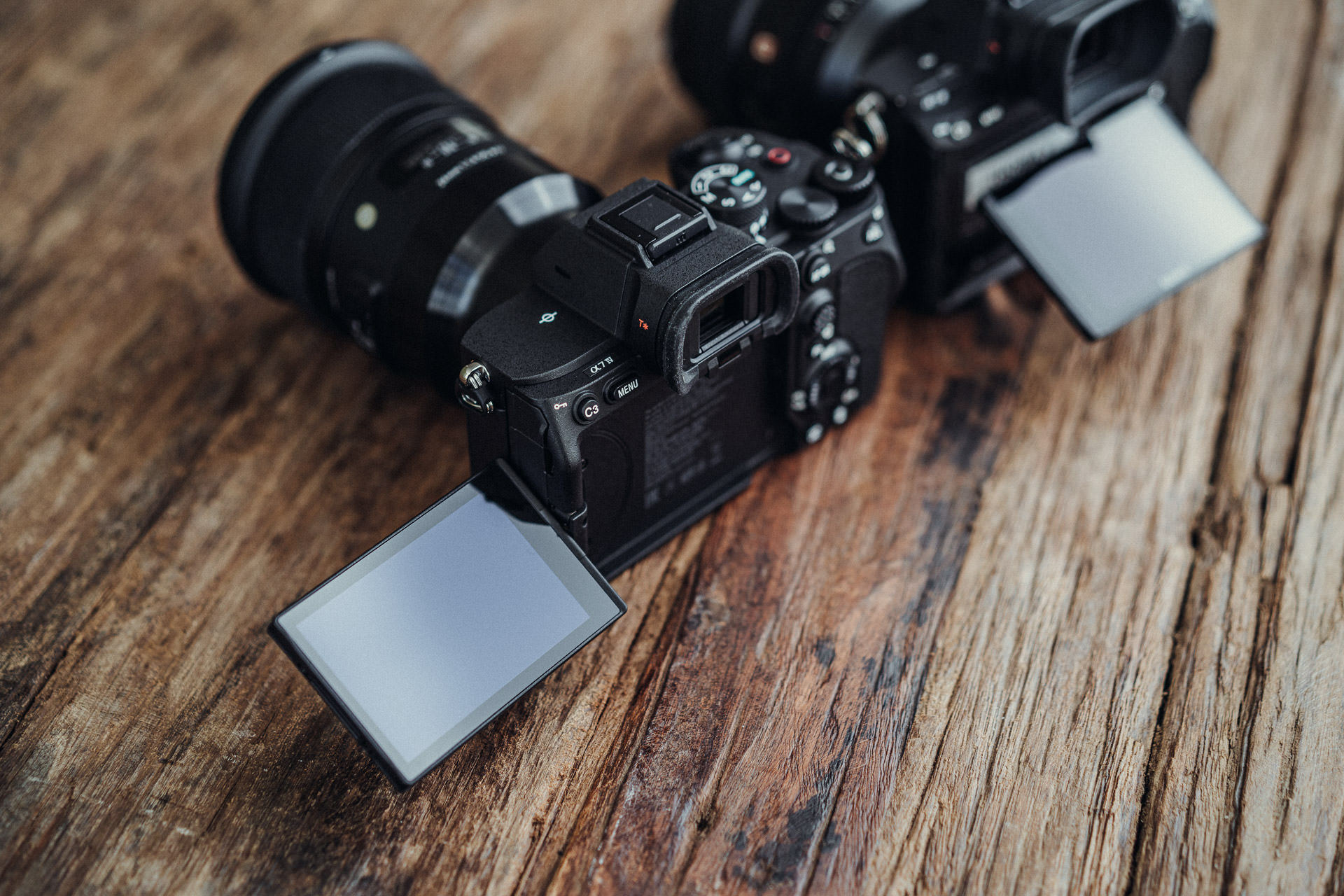
Shooting in 10bit 4:2:2 gives you a bit more possibilities when editing colors afterwards. Before only 8bit were available in the A7 III. The recording limit was always 30 minutes per clip back then. With the new camera you can now record until the battery is empty or the memory card is full.
Great new viewfinder, display still poor
One reason for the upgrade would definitely be the viewfinder. This now has a resolution of 3.69M pixels instead of only 2.36M pixels as before. Together with the high refresh rate of 120Hz, looking through the viewfinder is much closer to reality. This is especially useful if you often focus by hand. Due to the higher resolution, using focus peaking assistant is now easier possible. Also, pictures are simply more beautiful to admire – photography is much more fun.
Also positive: The sensor for detecting whether you are looking through the viewfinder no longer sits deep in a hole. With the Sony A7 III I often had the problem in the rain that a drop got stuck in the hole of this sensor (see hole above the viewfinder glass). As a result, this was permanently active, which meant that the display could no longer be activated. This is now fixed with the new camera.
Unfortunately, the rubberized eyecup has turned out relatively flat again – so I would get a deeper third party eyecup again like I did with the A7III. You can see this one here on all pictures – it’s not the regular eyecup. The sun is blocked better by using a deeper cup. With glasses, however, maybe it is better to stay with the regular one.

Apart from a new hinge, however, the display has only undergone a few changes. The increase in resolution only changed from the 921,600 pixels of the A7 III to 1,036,800 pixels. For comparison: The display of my former Canon 5D Mark III from 2012 already had a resolution of approx. 1.040.000 pixels. Meep.
At least: The display now has a new aspect ratio, so that a bit more surface can be used. As a result, the black stripe at the bottom of the screen has disappeared. In addition, the touchscreen has now been more deeply integrated into the camera operation. Now it is possible to e.g. swipe your finger through the captured images. Finally!
The new menu
Sony had to take criticism since then because of the confusing menu. I think it was not the biggest problem, since you put the most important functions on custom buttons or in the MyMenu once – and then quickly access them from here. Nevertheless, the difficult translations and abbreviations also increase the time it takes to find the needed functions.
In the A7 IV, the new menu has been introduced. It has a better structure and everything is easier to read. This also saves some word abbreviations. The grippy joystick also makes it easier to operate. The nestings are now a bit more intuitive simply by pressing right and left. By pressing right you push deeper into the subitems, to the left you push out again.
As indicated, the menu can now also be operated via touchscreen.
3. The new camera body: improved comfort and operability
I like the improvements under the hood – but the improvements of the camera body even better. Because these you perceive directly when photographing and improve the experience.
(Almost) the new camera body of the A7SIII
You will first notice the bigger grip. This has been further refined, which makes the camera feel much better in the hands. Overall, the body gives the impression that the Sony A7III has grown up. This is also evident in the buttons, which are now simply larger and easier to use. Here is my overview of all the changes to the body:
- Grip and body as a whole have become larger and more grippy
- Mode dial now has a total of 3 custom modes
- New switch under the mode dial changes between photo and video mode
- Buttons have become larger, mode dial and joystick less fiddly
- Pressure points of the buttons are now deeper and can be pressed more smoothly
- C1 and record button have changed places
- The thumbwheel (for the shutter speed) is no longer located in the housing, but open on top
- Wheel for exposure compensation is no longer labeled for custom assignment
- Covers of the side ports now of higher quality with hinges
- Display in 3:2 ratio, which makes the black stripe disappear and thus seems larger
- Memory card slots with secure sliding mechanism
- Better weather seals visible in all places
- Rotating flip-out camera display
Here I show you the differences in pictures – in the first picture (left) is in each case the Sony A7III, in the second picture (right) the new Sony A7IV (please do not compare the eyecups, since this was exchanged with the A7 III by me):










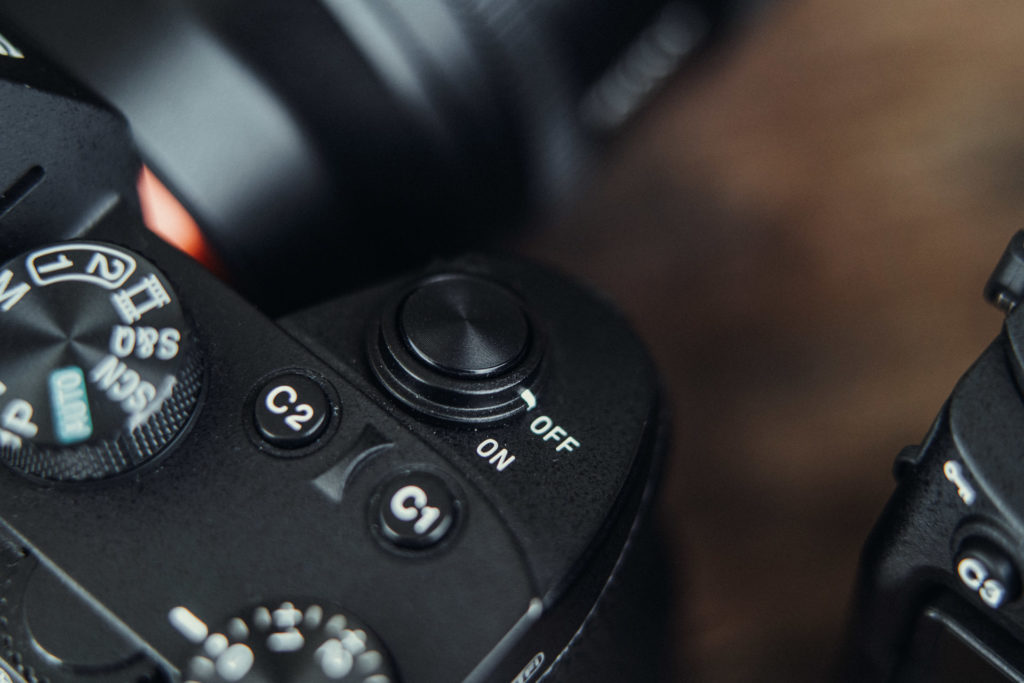





So essentially, it’s the Sony A7S III’s body with all the benefits from weather sealing to efficient heat dissipation in video mode. There is even a slight improvement with a big effect: The opening for the touchscreen has moved from the top to the bottom at the edge. This actually makes opening the A7IV less fiddly:
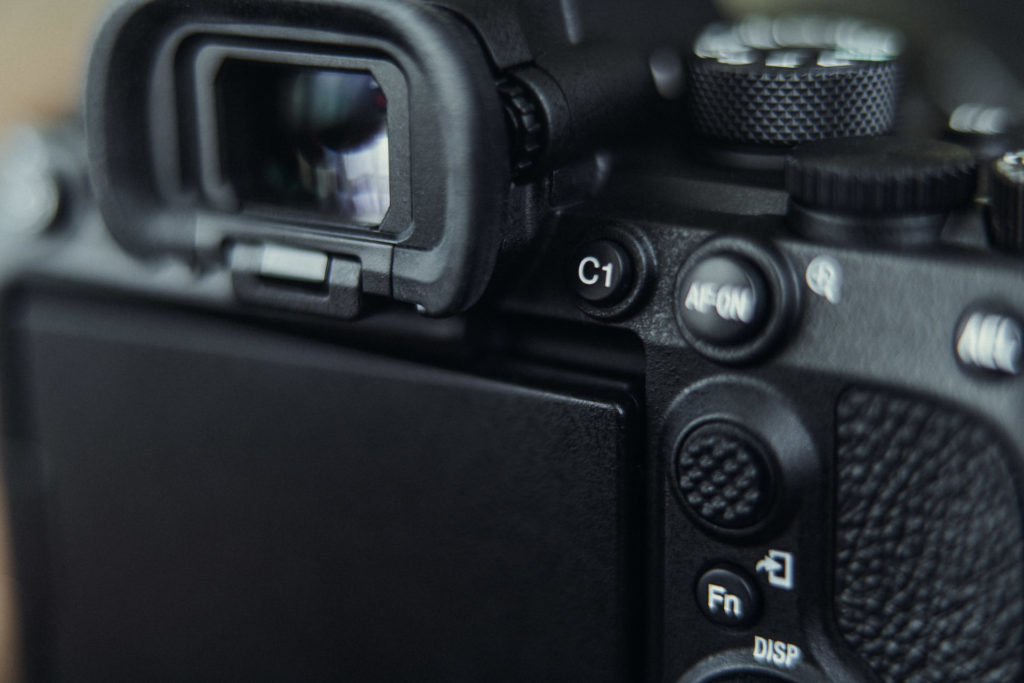
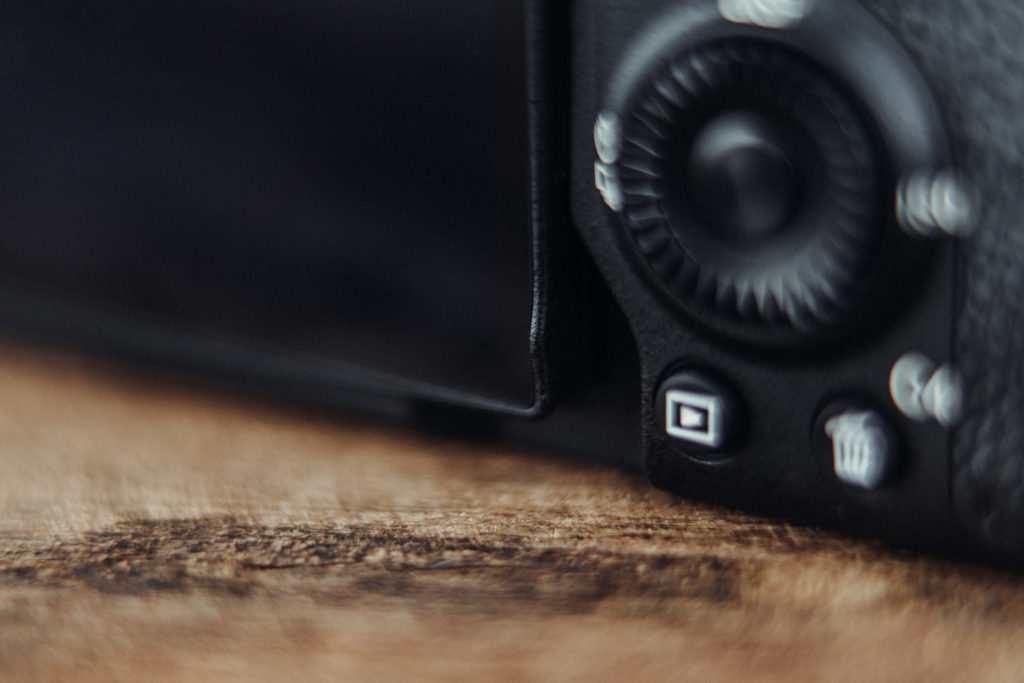
What I noticed is that the grip is still relatively close to the lens mount. Therefore, just like the predecessor model, the gap between fingers and lens is quite narrow.
Finally, it should be said that the new camera has not really become heavier despite the bigger housing. The camera only weighs in at approx. 10g more – but the camera even feels a bit lighter in the hand due to the better grip.
4. More extras
Up to this point, you’ve seen the big updates that would justify a purchase in my eyes. Now I will show you the cherries on the cake – which are not necessary, but still provide a little more enjoyment.
Like the predecessor, the camera has a dual memory card slot. This allows to save photos of one-time events (such as a wedding reportage) immediately to two cards at once. Redundant saving is always my first step of my data security and backup strategy.
The new Sony camera now supports fast UHS-II SD cards on not just one, but both card slots. In addition, you can also insert a CFexpress type A card in slot 1. A small drawback: With the Sony A7S III, this is possible with both slots.

The camera uses the Sony NP-FZ100 battery again. By upgrading from A7 III, you can continue to use the old batteries. I still appreciate the battery life of these batteries. The cameras run long enough with these. Not all camera manufacturers already use such large batteries, which means that the A7IV’s runtime is often longer. I have two Sony A7 III cameras with me at weddings and have to change the battery on each camera no more than once throughout the day.
The image stabilization of 5.5 steps is half a step higher than the predecessor’s. But in everyday use, this is hardly noticeable. The new Active Stabilization in the video mode calms your shaky hand even further, but still doesn’t perform miracles.
Due to the unprinted wheel of the original exposure compensation, it is no longer necessary to use it only for this purpose. Instead, you can now also use this to control ISO, white balance, aperture or audio recording level and other functions.
If you would like to stream with your DSLM, the camera now also supports streaming via USB cable.
5. My points of criticism in the Sony Alpha 7 IV test
Up to this point, I have shown you a factual review of the Sony A7IV. From here on, however, I would also like to add my own opinion. So if you’re only into the hard facts, you can stop reading. If you want even better advice on buying a camera, be sure to read on here.
1. Where is my game changing moment?
Now I have to hold back a little on the first point of criticism. In order not to get too emotional. Here I remember back to 2018 – when I just drove the Sony A7III home from the photo store and unpacked it for the first time. As already indicated – the camera body was okay – but nothing more. Still, the camera really blew me away at the time.
Because I could focus perfectly on a person’s eye at the touch of a button. I was flashed. I had never experienced anything like this before. In 2018, Sony was ahead of its time – because at that time no manufacturer could offer me this function at this precision. At least not in the mirrorless full-frame market.
This was a feature that made me sell my beloved Canon equipment completely. And also my colleague Dominik followed my lead and offered his Nikon mirror camera directly for sale – three minutes after trying out my Sony.
It was just something completely new. It was a unique selling point – at least for a few years. It was a real reason to get a Sony. Of course, this was also related in some way to the switch to a mirrorless camera. Still, I sometimes wonder if there will ever be such a game changing moment again.
In the meantime, this function is of course also available from all other manufacturers. Nikon and Canon also used very high quality camera bodies for their DSLM cameras from the beginning. And also reasonable viewfinders and displays. For a while, the Sony A7 III seemed to me to be a bit left behind by other manufacturers. Sony has taken a relatively long time for the A7IV.
It is logical that Sony also took the next step and improved the housing, display and viewfinder. This makes the Sony A7 IV a really very good camera that covers all wishes. From photos to videos, the camera delivers 1A quality. And of course the focus system became even more reliable and faster – even under more difficult situations. Nevertheless, they only caught up with other manufacturers. There is no new unique selling proposition, nothing like back then to say: I absolutely need exactly this device. Nothing that would make me sell my soul for Sony right again.
2. The price and looking at other camera brands
The Sony A7 III was originally launched as an »entry-level« mirrorless full-frame camera for 2300€. Currently you can get them with cashback or as a special offer already for around 1600€. That’s 1200€ less than the A7 IV, although not everyone needs the extra performance and features. Therefore, a big competition comes from Sony itself. Because even the A7 III is still a great camera and didn’t get worse over night.
The direct competitor to the Sony A7 IV is the Nikon Z6 II* (released in 2020). Even the Z6 Mark I already had a viewfinder with the same resolution as the Sony A7 IV. But the Z6 Mark I was released in 2018 and the A7 IV in 2021. After all, the viewfinder of the A7 IV runs at 120hz, the Nikon only half as frequently. But since it’s release in 2018, the Nikon Z6’s 2.1M pixel display is also twice the resolution of the 2022 A7 IV. Why Sony? Also Nikon already had a lot of experience with camera housings, which made this one seem more valuable right from the start.
In short: Of course you will end up choosing the camera that offers exactly what you need. Each of the two cameras has its own advantages and disadvantages. The Sony A7 IV rocks when it comes to autofocus, image quality and video functions – but somehow still can’t get basic things under control. It looks as if some details like display resolution were either forgotten or kept artificially small. For many, the Nikon Z6 II* will already offer a solid overall package – and that for currently approx. 2000€ instead of 2800€.
3. Everything must be hybrid
The world is full of content producers. Isn’t it? Yes, I am always happy about video features. Because every now and then I create a Youtube video and think it is convenient that I can simply use my existing Sony equipment for it. Without having to buy something new.
Still, sometimes my thoughts are also with the guy who simply wants to take pictures. So if you’re not into video at all, you still have a camera that’s packed to the brim with video features. Sure, having is better than needing. However, you have to pay for all these functions with the quite hefty price. Even if you never plan to use them.
Still, I have to admit that some of the new video features are a bit annoying for me as well:
4. The origami display is here
Wherever you read comments on new camera announcements on the Internet: Everywhere people complain that this or that camera does not have a completely articulating display again. But I think the origami folding display isn’t very useful, especially not for wedding reportages.

While it might come in handy in some other situations (and for selfie filming), it’s always a bit more inflexible to use it with an extra turn. But that can also be due to my photography behavior.
For wedding portraits, for example, I flip out the screen of my A7III briefly to take a shot from ground level. If something exciting happens in the next moment, I can fold the display back in just a second. Without origami folding. When I shoot from belly height, I can look straight down. Not sideways. Positioned behind the camera, the regular flip-out screen provides a more intuitive feel when panning the camera.
In my opinion, Fujifilm has made the best display mechanism with the X-T2. Here the display can be flipped out in landscape as well as portrait mode.
6. Links and accessories recommendations
Here you can find the camera in your favorite camera store:
I already indicated that I am not a fan of the flat eyecup earlier. That’s an example for optimizing some aspects of the camera with suitable accessories. So here’s my list with a few recommendations:
- Sony NP-FZ100 battery*
- Sony battery charger* – Unfortunately, modern cameras no longer come with chargers. After having bad experiences with third party manufacturers (and not wanting to damage the expensive original batteries), I recommend this device
- Sony VG-C4EM battery grip* – I hate nothing more than to mount a 50€ battery grip on a 3000€ device. Therefore I always go for the original
- Deep Eyecup* – Unfortunately there is no original available, but my third party eyecup lasted long on my A7 III. The deeper eyecup blocks direct sunlight better from the viewfinder.
- Sigma MC-11 adapter* – With this adapter you can use your old Sigma lenses with Canon EF mount without any speed or quality loss.
If you are looking for a clip-on flash, I have compared the original with a replica in the Sony Flash Comparison. I can really recommend the Godox V1 round flash*.
My recommendation of lenses I actually own myself:
7. Conclusion: Sony A7 III or Sony A7 IV? What should you buy?
Will I buy the Sony A7 IV some day? Probably yes. This is because all the features packed into this camera body are incredible.
All in all, the numerous innovations make the Sony Alpha 7 IV a really successful all-rounder camera. It’s typical for Sony, that the new 33MP delivers incredible image quality. I think the megapixel count just hits the golden mean. The autofocus system is also something that still sets Sony apart from the competition. It’s unlikely to find anything as good as this AF system in this price range. With features like real-time tracking, artificial intelligence, the very good speed and accuracy of the A7 III is surpassed once again.
If you shoot video from time to time, you are able to use truly professional features: from 4K60, fully articulating display, 10bit, cine profiles to unlimited recording time and much more, nothing stands in the way of cinematic movies.
But what would a Sony A7 IV review be like if I wasn’t able to point out some drawbacks? This is mainly due to the embarrassing display resolution. Also the camera housing has grown up and became really ergonomic, but a real feeling of »high-value« still doesn’t come up. Whether it has to is up to you. I can’t say why, but my Fujifilm X-T2 feels better. Not more ergonomic, but more valuable.
Also, I would have liked a regular folding display à la Fujifilm X-T2 better. The twisting and folding of the fully articulating screen annoys me more than I can get any benefit from it. But maybe it offers you an added value for your specific purpose.

At 2800€, the price is a bit higher than at the time of the release of the A7 III – but in my opinion, this is no longer a camera for the »entry« into full-frame. The camera matches the purpose its allrounder base A7 series (no R or S) and works really good in every situation. The price is justified for all the features in my eyes.
If the price is still too high for you, you still get a really good camera with the Sony A7 III. With the further price drop, the price/performance ratio is getting better and better. If you don’t mind the negative points on the camera body, don’t shoot videos and don’t photograph at sport events regularly, the A7III will do just fine for you. The Sony A7 III remains the true entry-level mirrorless full-frame camera due to its price. If you need a bit more resolution, a wide range of video features, a better body and viewfinder, or even the upgraded autofocus, you can go for the Sony Alpha 7 IV.
If I own the camera some day, I will add more (long-term) experiences to this post after a while.


